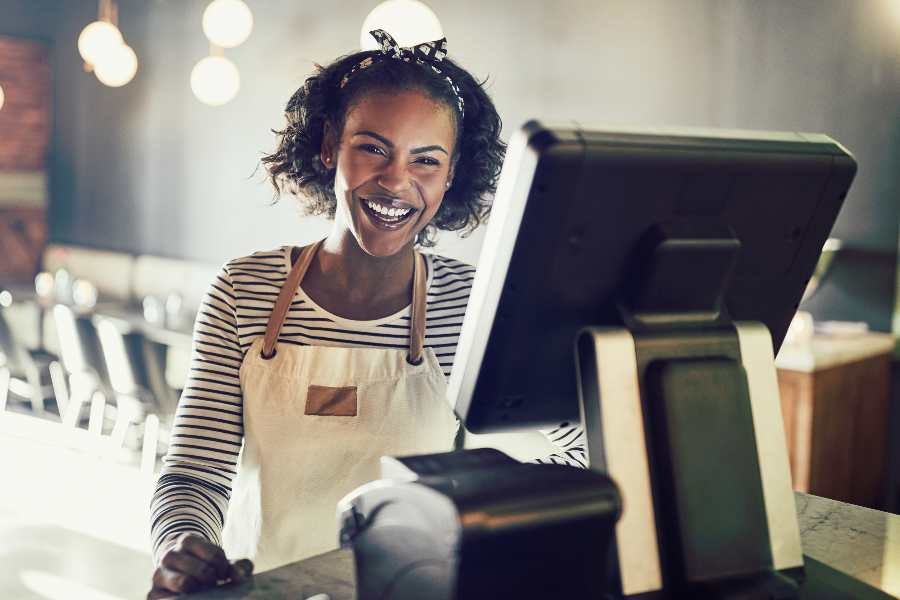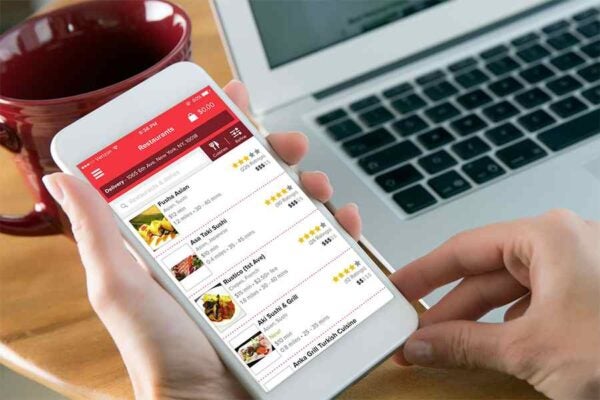Dynamic pricing refers to when a restaurant makes pricing changes either due to busier or slower business periods, while surge pricing is exclusively when a restaurant raises prices due to demand at busier times. The concept of restaurant dynamic pricing has become popular in the last few years as restaurants aim to better serve both consumer and business needs.
Our article below details how to use dynamic and surge pricing to effectively build a business model that is flexible and successful during key operational periods.
What Is Restaurant Dynamic/Surge Pricing?
Dynamic pricing for restaurants capitalizes on the volume of business in any given period to determine menu prices. There are two ways to manage dynamic pricing: lowering prices to draw customers in or raising prices during busier business periods to maximize profit and control the influx of orders.
The earliest example of dynamic pricing in a restaurant setting is happy hour. Happy hour appeals to diners through lower prices on select drinks and food, driving business during downtime.
While many consumers call this “surge pricing,” that is not very accurate; surge pricing only entails pricing changes due to busier restaurant periods. Dynamic pricing accounts for both slow and high-volume (surge) pricing fluctuations. It is better to understand dynamic pricing on both ends of the model, as you may find that getting more customers in at slower periods will help you generate more revenue in a much-needed time of your operating hours.
When to Use Dynamic & Surge Pricing
Dynamic or surge pricing should be used during more volatile business volume periods. At these periods, you should be looking to keep pricing flexible—if your restaurant is very slow between noon and 4 p.m., lowering your prices to draw more customers in is a great idea. Alternatively, if your restaurant is slammed during a busy Saturday dinner service, then raising prices during this time can help you capture more revenue due to the high customer demand.
Dynamic pricing should be used to fill out gaps in business or fortify your business’ revenue opportunities during busier services. I would not recommend always having dynamic pricing affect your prices, as you do want a standard pricing model that consumers can rely on.
It is often best to use dynamic pricing to lure customers in during slower periods with lower prices. This still helps your business drive traffic and is received positively by customers. As of now, dynamic pricing to drive traffic seems to be more widely accepted.
Restaurant Dynamic/Surge Pricing Examples
Restaurant surge pricing has already been implemented in some restaurants, and it is important to note how it is being used. Below are some examples of how dynamic and surge restaurant pricing are making their way into restaurants.
Wendy’s
Wendy’s was hit with some major media attention this year due to their announcement of tech investment allowing for dynamic pricing. The goal is to offer menu boards that work with AI and human input to provide dynamic pricing on their menu items. It focuses on daytime business, especially slower periods. This tech can also be used when the restaurant is busy and wants to make more of a profit.
Noodles & Company
Noodles & Company was another major food chain that decided to invest in digital menu boards to offer dynamic pricing. The brand was able to use its technology to analyze market conditions and offer pricing that was reflective of the needs of the business. Furthermore, they did not note any customer deterrence as a result of using this model, even though many expected they would.
Starbucks
In a brilliant use of dynamic pricing, Starbucks utilizes its app to highlight sales and drive customer traffic during slower periods. Current ads share that every Friday through the summer, from 12 p.m. to 6 p.m., customers who order through the app can get a 50% discount on a chosen beverage. Friday afternoons are often slower for Starbucks, so offering this deal to their loyal customer base builds a stronger relationship, offers value, and brings in more business.
Juicer
This example is not a restaurant but rather a restaurant revenue management startup that just raised $5.3 million in funding. Juicer provides restaurants with technology that can help manage surge pricing and create more revenue using their existing menu. The company’s technology assists with dynamic price offerings while offering customers pricing transparency—a good solution for restaurants interested in learning more about dynamic pricing for themselves.
Kotipizza
A pizzeria chain based in Finland followed the same sentiment as Starbucks by offering cheaper delivery fees for pizza in off-hours. This offering drew business for them, making customers more interested in slower business periods due to the prospective savings they could attain. Examples like this show how positively a customer base can receive dynamic pricing.
Tips for Implementing Restaurant Surge & Dynamic Pricing
Implementing dynamic pricing in a restaurant can be challenging—guests can be emotionally tied to the food you serve and perceive pricing changes differently. That being said, there are a variety of smart ways to implement dynamic pricing in your restaurant while also ensuring customer satisfaction.
Advertise the Value Add
When rolling out dynamic pricing, I would focus first on lowering prices during slower periods. This starts the dialogue of your dynamic menu prices on a good note and emphasizes a value add to your customer base. Sharing that prices may be lower during slower periods can draw customers in and make an immediate impact on your business.
Related: Restaurant Marketing Ideas
Work With Your Technology
The next piece of advice I’d give when implementing dynamic pricing is understanding how you can use your existing restaurant tech to maximize the effectiveness of this choice. Many modern point-of-sale (POS) systems can let you change pricing immediately, and some let you schedule price changes or discounts in advance. Work with your POS system to better understand the tools it offers to help you provide dynamic pricing.
Analyze Sales Analytics
Your sales data can be key to understanding how to implement your dynamic pricing and what menu items should be included. Using your POS sales software or other sales data will allow you to find key busy or slow periods, and you can also tailor your dynamic pricing to popular menu items or items you can achieve a higher profit margin on.
Related: Key Restaurant Metrics
Be Mindful of Raising Prices
The goal of surge pricing is to capitalize on busier business periods in your restaurant—but it’s important to avoid alienating customers. If you are too aggressive with your price increases, you will negatively impact customer experience and drive diners away from key business periods. I suggest setting clear goals on the profit targets you want to hit, and from there, using dynamic pricing to offer a fair price that still delivers for your business.
Be Transparent
I’d like to use Uber as an example of this last point. When you order an Uber in a big city, the app will display a message about increased pricing during busier periods due to higher demand. Being transparent like this lets customers understand that busier service times will cost them more to dine with you. While this communication may not be what they want, it is clear and honest. Hiding price surges may cause backlash your business cannot afford.
Frequently Asked Questions (FAQs)
Restaurant dynamic pricing is a newer concept for most restaurants. That said, here are the most commonly asked questions about this pricing strategy.
Bottom Line
For many restaurant companies, dynamic pricing models are the way of the future. Operating and food costs in a restaurant are high, and labor is always a present cost to account for as well. Dynamic pricing allows you to utilize the labor you have on hand and the space you are serving customers out of more efficiently. More importantly, it lets you build more revenue and grow a broader customer base when done effectively.
ALSO READ



